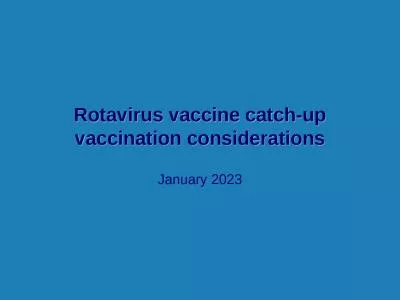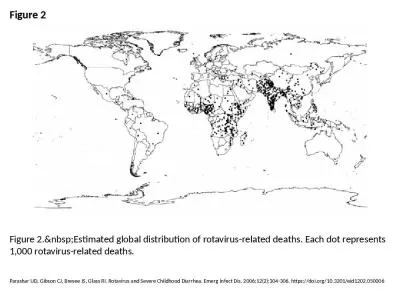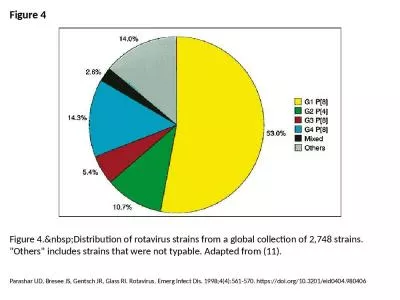PPT-Foodborne viruses; Rotavirus
Author : briana-ranney | Published Date : 2016-05-12
2 Global Impact of Gastroenteritis wwwwhointvaccineresearchdiseasesdiarrhoealenprinthtml 3 FOODBORNE GASTROENTERITIS wwwcdcgovncidoddbmddiseaseinfofoodborneinfectionsghtm
Presentation Embed Code
Download Presentation
Download Presentation The PPT/PDF document "Foodborne viruses; Rotavirus" is the property of its rightful owner. Permission is granted to download and print the materials on this website for personal, non-commercial use only, and to display it on your personal computer provided you do not modify the materials and that you retain all copyright notices contained in the materials. By downloading content from our website, you accept the terms of this agreement.
Foodborne viruses; Rotavirus: Transcript
2 Global Impact of Gastroenteritis wwwwhointvaccineresearchdiseasesdiarrhoealenprinthtml 3 FOODBORNE GASTROENTERITIS wwwcdcgovncidoddbmddiseaseinfofoodborneinfectionsghtm Bacterial Agents. Please don’t pass the olives! Unusual. cases of food . poisoning.. Corinne Amar PhD. Head of the foodborne pathogens reference services FPRS,. Gastrointestinal Bacteria Reference Unit GBRU. Botulism. COMMON, SEVERE, DEVASTATING, PREVENTABLE. THE LATEST EVIDENCE & WHAT’S NEEDED TO STOP ILLNESSES AND DEATHS. Contents. Executive . s. ummary . [Slide 3. ]. Rotavirus: B. ackground. , illnesses and deaths . Ryan M. Osterholm. ryan@prtizkerlaw.com . Twitter@ecolilawyer . 612-338-0202. Pritzker Hageman, . P.A. .. Minneapolis, . Minnesota. . Foodborne Illness Law. Pritzker Hageman, P.A., is one of the few law firms in the country with a practice devoted to Plaintiffs’ foodborne illness claims.. Scallan E, Griffin PM, Angulo FJ, Tauxe R, Hoekstra RM. Foodborne Illness Acquired in the United States—Unspecified Agents. Emerg Infect Dis. 2011;17(1):16-22. https://doi.org/10.3201/eid1701.p21101. What is a . foodborne. Illness?. A disease transmitted by food. Caused by contaminants. Substances that are harmful to the body. Bacteria. Chemicals. Bacterial . Foodborne. Illnesses. Bacteria are a type of microorganism that are single-celled or non-cellular organisms. Mahendra. . Suhardono. Production Director. 11. th. Annual Meeting of DCVMN, 16 September 2010, Hyderabad, India. BIO FARMA. Rotaviruses. Rotaviruses are the most common cause of severe diarrhoeal disease in young children throughout the world. Bacteria, like SalmonellaListeriaE. coli Viruses, such as norovirus or hepatitis AWHAT ARE THE SYMPTOMS?Symptoms range from relatively mild discomfort to very serious, life-threatening illness.WHO IS Rotavirus deaths account for approximately 37 percent of childhood diarrheal deaths and 3.4 percent of all deaths in children under five. Nearly every child is at risk of infection, regardless of loc Article Jain, it Umesh D. Parashar I Roger I. Glass I and Maharaj K. Bhan 2 Gastroenteritis Section, Division of Viral and Rickettsial Diseases, National Center for Infectious Diseases, Centers for 329 27b The disease Rotaviruses are ribonucleic acid (RNA) viruses that are contained within a protein capsule. Rotavirus strains are classified based on the outer layer proteins VP7 (G type) and VP Marie C. Hill. Programme Director – . BSc/Graduate Diploma/PgDip/. MScPrimary. . Care (Practice Nursing) and . Senior Lecturer (Practice Nursing. ). Senior Fellow Health Education Academy. School of Health Sciences. January 2023. Late vaccination. If a child misses a rotavirus dose or series for any reason, late vaccination for that child can take place . at any time before 24 months of age. The interrupted vaccine schedule should be resumed . Parashar UD, Gibson CJ, Bresee JS, Glass RI. Rotavirus and Severe Childhood Diarrhea. Emerg Infect Dis. 2006;12(2):304-306. https://doi.org/10.3201/eid1202.050006. Parashar UD, Bresee JS, Gentsch JR, Glass RI. Rotavirus. Emerg Infect Dis. 1998;4(4):561-570. https://doi.org/10.3201/eid0404.980406.
Download Document
Here is the link to download the presentation.
"Foodborne viruses; Rotavirus"The content belongs to its owner. You may download and print it for personal use, without modification, and keep all copyright notices. By downloading, you agree to these terms.
Related Documents

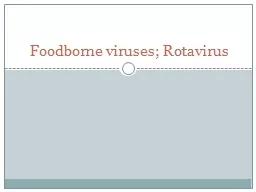
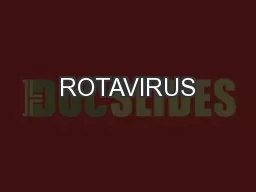
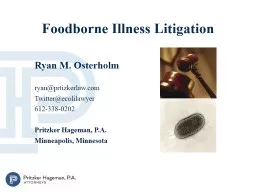
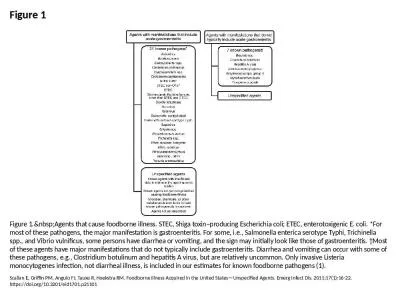
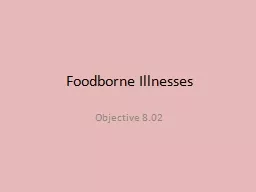
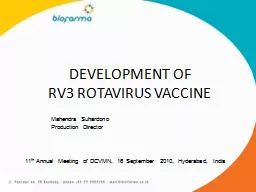
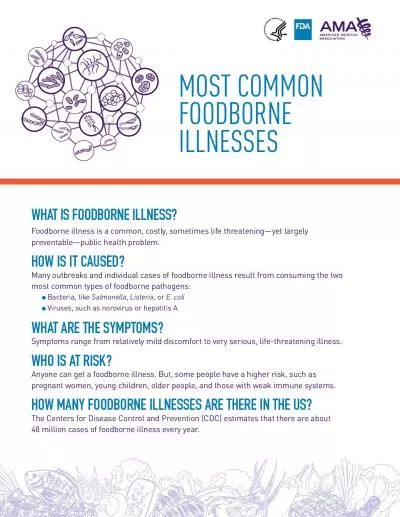
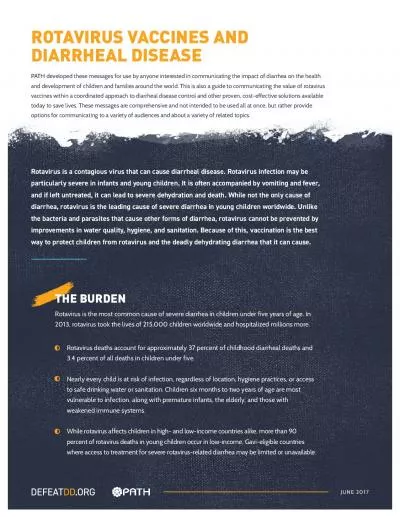
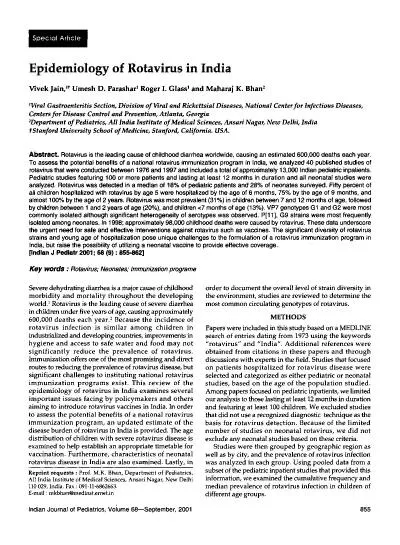
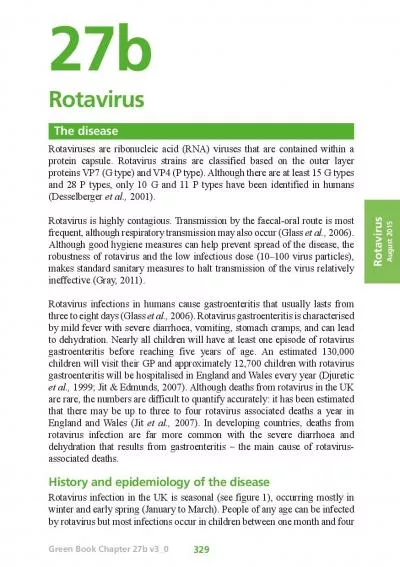
![NM S003: Rotavirus [27/11/2017]](https://thumbs.docslides.com/998804/nm-s003-rotavirus-27-11-2017.jpg)
